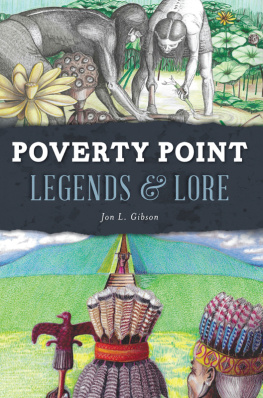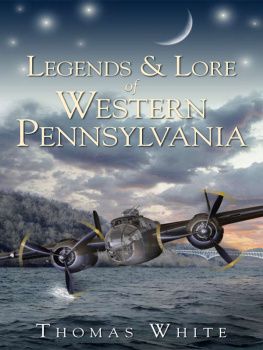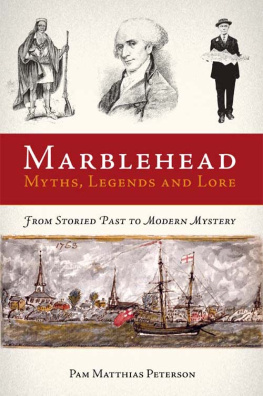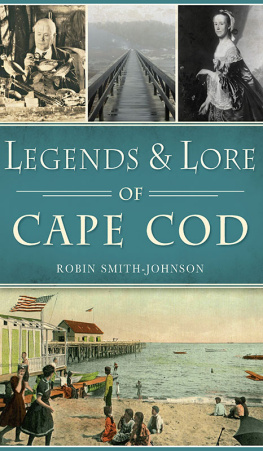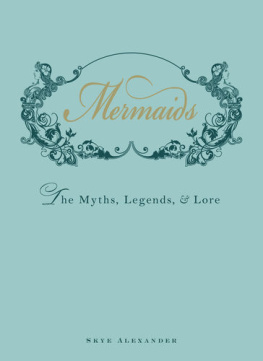Published by The History Press
Charleston, SC
www.historypress.com
Copyright 2018 by Jonathan Kruk
All rights reserved
Bottom front cover image From Worlds End, by Thomas Locker, 2006. Used with permission from the artist, courtesy of R. Michelson Galleries, Northampton, Massachusetts, www.rmichelson.com. Top front cover image Hudson River Valley View from Fort Putnam, West Point, by George Henry Boughton. Courtesy of the New-York Historical Society, gift of John V. Irwin and William F. Irwin.
First published 2018
e-book edition 2018
ISBN 978.1.439.66482.7
Library of Congress Control Number: 2018936084
print edition ISBN 978.1.609.49874.0
Notice: The information in this book is true and complete to the best of our knowledge. It is offered without guarantee on the part of the author or The History Press. The author and The History Press disclaim all liability in connection with the use of this book.
All rights reserved. No part of this book may be reproduced or transmitted in any form whatsoever without prior written permission from the publisher except in the case of brief quotations embodied in critical articles and reviews.
FOREWORD
The relationship of people and place is only partly about landscapes and resources. Around the world, it is stories that bind communities to the geography and ecology around them and shape their relationship with their environment.
Thats why I was so happy to see Jonathan Kruk break away from storytelling to write down the deep insights hes gained through recounting our Valleys tales over the quarter century Ive known him. His account, told with the same mix of wit and wisdom he delivers when impersonating a figure from history, spins through the remarkable characters, legends and geological features that make the Hudson Highlands so extraordinary.
Theres the Cow-Boy Claudius Smith, the Loyalist Scourge of the Highlands who was hanged in 1779, long before the cowboys of the West made that term stick. Youll meet Deering Ayres, who in 1849 blasted a famed geological feature, Turks Head, only to die in a similar blast in the Palisades years later. Theres the ghost prisoners pig and, of course, Thomas Davenports famous runaway bull, which marauded in the Highlands until it is said to have leaped from the crag now called Breakneck Ridge. That ridge is now one of the most popular day hikes in America.
I began to absorb the power of regional stories far from here and long ago. In 1989, Id returned from four months of nonstop reporting in Brazil and was writing my first book, The Burning Season, on the conflict between cattle ranchers encroaching on the Amazon rain forest, the Indians and the rubber tree tappers whod found ways to thrive there without cutting the trees. The ranchers Id interviewed used the Portuguese word limpar (which means to clean) to describe the process of cutting and burning the forest to transform the land into pasture.
When I traveled by motorized canoe up the Jurua River in areas yet unreached by the muddy roads eating into the region, I met a rubber tapper, Antonio, who had exactly the opposite view of the world. If they cut the trees, how can anyone live? he wondered aloud, sitting in the night near the chalky flow of that Amazon tributary. Antonio had just told me about a nocturnal encounter with a jaguar that refused to retreat from his tree-tapping trailand how he had had to ask its permission to get home. It complied. Can you imagine a country that has only pasture and cattle, without trees and man? he said. That is no country. Nothing will grow there. There is no game there. The ranchers will die in that kind of country.
In the Amazon, tension between those two stories continues to play out, with some regions now protected as much by the Indians and other forest communities as by formal demarcations of parks and preserves. The global story of that forests astounding biological diversity and power to shape its own weather now helps provide a shield as well.
I moved to the Hudson Highlands in 1991, one year after I finished writing that book. I quickly began learning, and reporting on, a new set of stories, draped in layers on the ancient stone foundations of these knobs and crags like the soil, moss, underbrush and wind-stunted oaks cloaking Storm King Mountain.
The boom and rattle of artillery and rifle fire in the summer exercises and war games at West Point echoed not only off the slopes but also back in time to pivotal Revolutionary War skirmishes. On a cold windy morning seventy-two hours after dust from the murderous destruction of Manhattans two great towers blotted out the sunshine and warmth of September 11, 2001, I became a humble witness to a momentous change in the story of the U.S. Military Academy at West Point. In classroom after classroom, professors scrambled to flip lesson plans to focus on an inverted war. Heres how I put it in the New York Times: Not since Pearl Harbor had the campus been rocked so powerfully by events, senior officers said. But in 1941 the enemy was clearly defined: across an ocean, over the next ridge. Now everything was as gray as a cadets uniform.
At noon, all four thousand cadets headed down toward the Hudsons banks to a prayer service. Capes flapping, they flowed like a wind-tossed river in the shadow of Storm King Mountain, where they listened to biblical passages about terrible happenings as storm clouds scudded from the north.
The waters have had their own layered narratives of loss and renewal. John Cronin, an environmentalist, professor and friend, described the vanished shoals of shad, the adhesive and dyes that coated shores decades earlier where tape and textile plants once stood. But that story was, happily, history now. Our great folk bard and Clearwater campaigner Pete Seeger sang of a river that may be dirty now but its getting cleaner every day as he danced through shoals of children gathered on Little Stony Point, once a quarry dock and now a park.
And all through these years, the stories of our region have been collected and mesmerizingly recited by Jonathan. Those he shares in this welcome volume will cause you to laugh, marvel, wonder and sometimes hold back a tear. Hopefully, they will cause you to share Highlands history and lore with others. In doing so, you will not only help sustain this regions weavings of natural wonder and cultural change, but you could also help determine the nature of the landscape and ecology for generations to come.
ANDY REVKIN
Nelsonville, New York, April, 2018
Andrew Revkin, one of Americas most honored environmental journalists, has reported for more than three decades from the North Pole to the Equator, mostly for the New York Times. He is strategic adviser for environmental and science journalism at the National Geographic Society. His most recent book, co-written with his wife, Lisa Mechaley, is Weather: An Illustrated History, from Cloud Atlases to Climate Change (Sterling Publishing, 2018).





